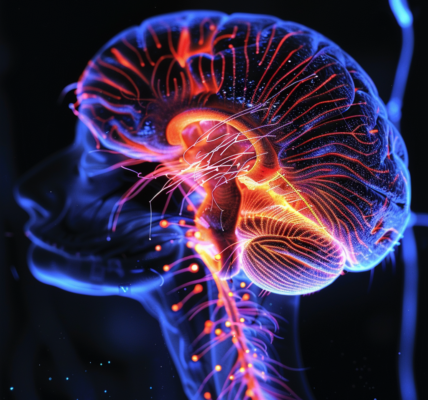Recent Discoveries in Cellular Aging: The Role of STING Protein
Researchers at the University of Pittsburgh have unveiled new insights into the role of a protein known as STING, which has been recognized for its involvement in antiviral signaling. A recent study published in Molecular Cell highlights STING’s critical function in cellular stress management and survival, suggesting that it may play a pivotal role in aging and age-related diseases.
According to Dr. Jay Xiaojun Tan, the senior author of the study and an assistant professor at the University of Pittsburgh, the discovery that STING serves a protective function in cells was unexpected. “It was quite surprising that STING has a protective function for cells to reduce stress and damage in addition to its well-known role in inflammation,” he stated.
The research indicates that maintaining a balance between STING’s dual functions—its role in inflammation and its protective capabilities—could be crucial for cellular health. This balance may have significant implications for the development of new therapeutic strategies targeting age-related ailments, as noted by the study’s first author, Dr. Bo Lv, a postdoctoral researcher in Tan’s lab.
In healthy human cells, DNA is typically contained within the nucleus and mitochondria. However, when DNA escapes into the cytosol, the fluid within the cell, it signals potential problems. “Cytosolic DNA is a danger signal associated with infections, cellular stress, cancer, and other diseases,” explained Tan. The presence of this DNA triggers a cellular alarm system that activates STING, which orchestrates the inflammatory response necessary to address these challenges.
While brief episodes of STING-induced inflammation are essential for combating threats, chronic activation of this pathway has been linked to neurodegenerative diseases and the overall aging process. This chronic state can lead to detrimental effects on cellular function and longevity.
To further investigate the beneficial aspects of STING activation in response to various stresses, Tan and his team conducted a comprehensive analysis of the proteins within cells. Their findings revealed that upon STING activation, two transcription factors, TFEB and TFE3, are transported to the nucleus, where they initiate the expression of genes that promote the production of lysosomes.
Lysosomes are organelles that play a vital role in autophagy, a cellular mechanism that facilitates the degradation and recycling of damaged components within the cell. “In response to STING activation, cells utilized TFEB and TFE3 to enhance lysosome production and boost autophagy,” Tan explained.
The relationship between lysosomes, autophagy, and longevity is well-established, indicating that these processes are integral to maintaining cellular health over time. By increasing the number of lysosomes and enhancing autophagic activity, cells can effectively manage and mitigate damage, thereby promoting a healthier lifespan.
This groundbreaking research not only sheds light on the multifaceted role of STING in cellular health but also opens up new avenues for exploring therapeutic interventions aimed at improving healthspan—the period of life spent in good health. As scientists continue to unravel the complexities of cellular aging, the findings regarding STING’s dual role may pave the way for innovative approaches to combat age-related diseases.
As the scientific community delves deeper into the mechanisms of aging, the implications of STING activation and its effects on cellular stress responses will undoubtedly remain a focal point for future research endeavors.





